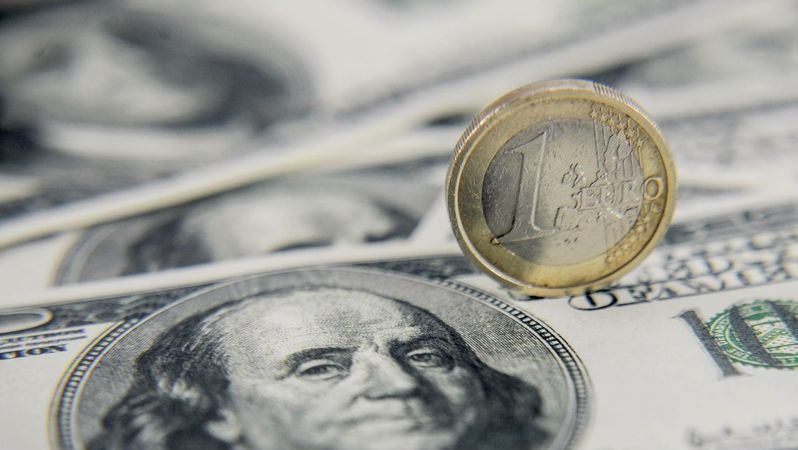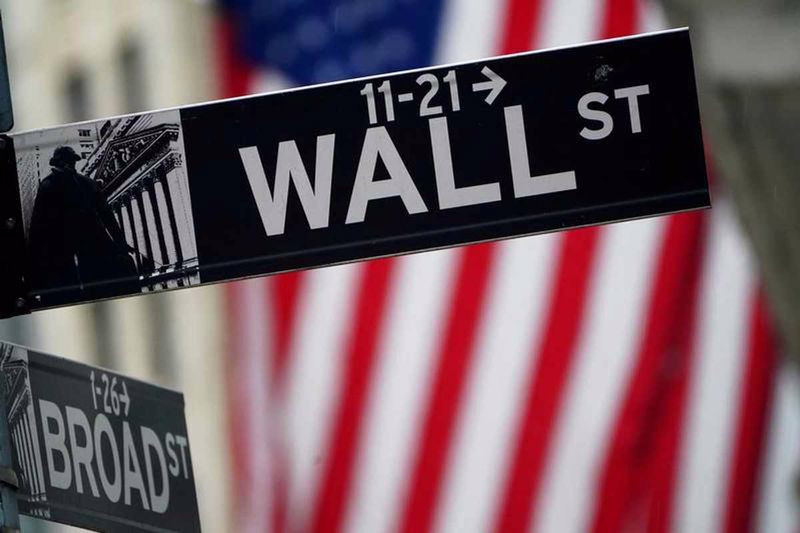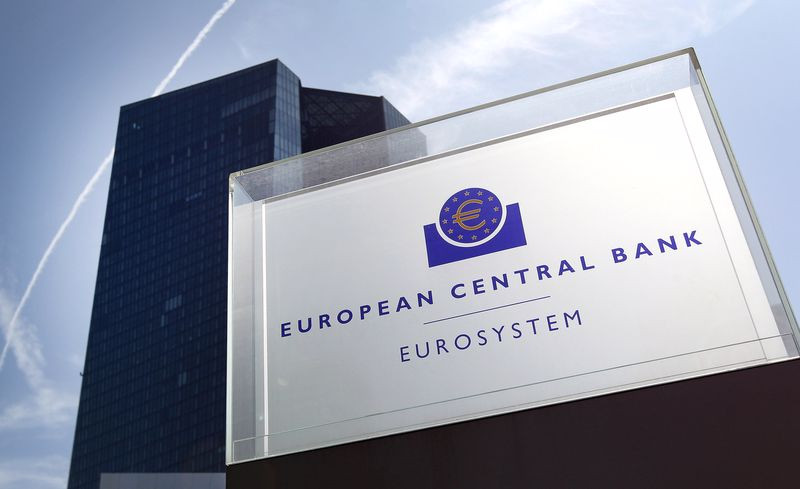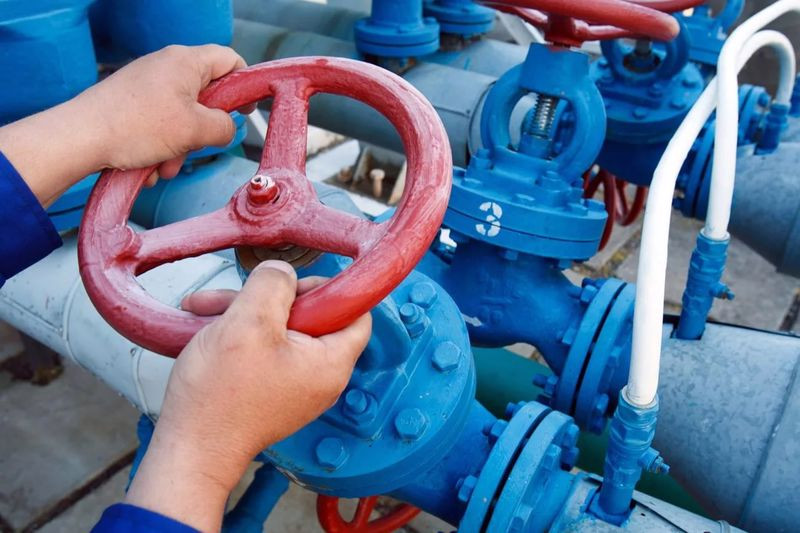
At the beginning of the new week, the protective dollar remained in the background amid improving market sentiment, which pushed stocks up and allowed the euro to extend the recovery from multi-year lows.
On Monday, investors seemed to brush off the reality in which the largest economies continue to face slow growth and accelerating inflation. To curb the surge in prices, leading central banks are forced to take aggressive measures to normalize policy. While quantitative tightening can help cool inflation, it can also slow economic progress, painting a bleak global scenario.
Key Wall Street indicators spent most of Monday's trading in positive territory and only turned to decline by the end of the session.
"It seems as if something is wrong: either the economic forecast is incorrect, or analysts are too optimistic about the reports," State Street Global Advisors analysts noted.
A complication for market participants was the announcement that Apple Inc. plans to reduce the pace of hiring new employees and increase capex next year in anticipation of an economic downturn.
Investors reacted negatively to this news. As a result, the main US stock indexes moved away from the highs since the end of June and plunged by an average of 0.7-0.8% after they finished trading on Friday with an increase of about 2%.
Leading Wall Street strategists are calling for caution, as the recent rise in the US stock market was caused by hopes that the Fed will not sharply raise the rate at its next meeting next week, and new data showed a larger than predicted decline in long-term inflation expectations in the country.
According to analysts from Morgan Stanley and Goldman Sachs, any rally in the stock market may be short-lived, as inflationary pressures remain high and a recession is becoming more likely.
According to Mike Wilson from Morgan Stanley, the probability of a recession in the US continues to grow. The analyst estimates the chances of its occurrence on the horizon of 12 months at 36%. In addition, Wilson warns of an increase in applications for unemployment benefits and a reduction in vacancies.
"The rally against the trend may continue, but make no mistake, we do not believe that this bear market is over, even if we avoid a recession," he said on Monday.

"While the decline in stocks since the beginning of the year reflects investors' expectations for a slowdown, I don't think a deep recession is yet being assessed," said Peter Oppenheimer, strategist at Goldman Sachs.
"It is too premature to believe that inflation will decline quickly or the pressure on the Fed has eased to tighten measures," he said.
Another representative of Goldman Sachs, David Kostin expects that weak macroeconomic prospects will threaten the profitability of companies, which has already declined from a record high. He considers the increase in the cost of borrowing in the United States one of the key risks to the profitability of stocks, which remained last year, despite rising production costs, coronavirus and supply chain disruptions.
As the minutes from the June FOMC meeting showed, the leaders of the US central bank are ready for new rate hikes, since its current level is still very low for an economy with low unemployment and high inflation.
The hawkish attitude of the Federal Reserve contributed to the growth of the US currency to levels not seen in the last 20 years.
A strong dollar negatively affects the income of multinational companies. Back in June, Microsoft Corp. lowered its earnings forecast after saying earlier in April that the firm's first three-month profits were reduced by about $300 million.
Since the beginning of the year, USD has gained about 10% in weight, a fifth of this growth occurred in July.
The dollar, which has risen significantly in recent weeks, showed a sharp decline last Friday after touching peak levels in the area of 109.30 points on Thursday, highs last seen in September 2002.
On Monday, the greenback continued to retreat from multi-year highs amid investors' reassessment of the likelihood of a Fed rate hike by 100 basis points at once at the central bank's July meeting. In the middle of last week, such a probability was estimated by market participants at 80%, but then, after speeches by a number of Fed officials, these expectations became more moderate.
In addition, according to experts, some weakness of the dollar is associated with profit-taking after its strong growth. Since the beginning of July, the greenback has strengthened by about 1.8% against its main competitors, including the euro.
The greenback's retreat from the overbought territory allowed the main currency pair to gain momentum.
On Monday, the euro rose in price against its American counterpart by more than 0.5% and ended trading around $1.0140.
The absence of significant news contributed to a favorable market mood, which became a tailwind for the single currency and put pressure on the protective dollar.On Tuesday, the greenback retreated further down, to 106.30 points, losing about 0.8% over the day.
Disappointing macroeconomic data on the United States continue to negatively affect the prospect of a Fed rate hike by 100 basis points in July and damage the dollar. Thus, the NAHB housing construction index in America fell to 55 points in July from 67 points in June.

Meanwhile, the euro jumped more than 1% to $1.0265, reaching its highest level since July 6, after Reuters reported that ECB policymakers would discuss raising interest rates by 25 or 50 basis points at their meeting on Thursday to curb record high inflation.
According to Eurostat, the annual inflation in the eurozone, according to the final estimate, accelerated in June to a record in the history of observations of 8.6% from 8.1% a month earlier. In June alone, consumer prices increased by 0.8%.
On Tuesday, money markets estimated a 60% probability of an ECB rate hike by 50 basis points following the results of the central bank's meeting on Thursday, compared with 25% on Monday.
However, speculators remain bearish on the single currency. The latest CFTC data shows that they have increased short positions on the euro by $1 billion.
Hedge funds are also betting against the EUR largely due to the conflict between Russia and Ukraine and related energy and inflation problems.
Many analysts remain skeptical about the euro, given the continuing concerns about Russian gas supplies to Europe, as well as how aggressive the ECB may actually be.
"Even if the ECB does raise the rate by 50 bps, the positive effects on the euro may be limited," HSBC strategists said, adding that 50 bps no longer looks so hawkish amid larger increases by central banks such as the Fed.
The Fed is expected to raise the benchmark interest rate by 75 basis points later in July. Despite the fact that this is more conservative than the 100 bps increase that the markets estimated at some point last week, it is still quite a significant increase.
The continuing difference in interest rates on both sides of the Atlantic will continue to support the US currency to the detriment of its European competitor.
There is reason to believe that the Fed can afford to tighten monetary policy more aggressively than the ECB.
Thus, the USD index is able to extend the growth to the highs since June 2002 at 110 points, which is 3% higher than the current values.
As for the EUR/USD pair, according to HSBC analysts, the rebound currently observed is likely to be short-lived and should provide better levels for entering short positions in the euro.
If the pair manages to break through the 1.0270 mark, the next potential resistance levels are located at 1.0300 and 1.0350.
However, even such a movement should not be considered as a trend reversal, since the previous pressure factors on the euro remain. And reaching such milestones will look like an opportunity to open shorts on EUR/USD with a target of 0.9800-0.9900.
The euro's position remains shaky, given the continuing political uncertainty in Italy after Prime Minister Mario Draghi resigned last Thursday. Italian President Sergio Mattarella rejected his resignation and asked the former ECB head to address parliament next week, but if the widely respected leader sticks to his position, the stability of this debt-laden country and, consequently, the euro will be under threat.

"An additional headwind for the euro could be the potential announcement on Thursday of the extension of the 10-day maintenance period of the Nord Stream-1 pipeline, which will lead to further depletion of gas reserves in Germany ahead of winter and deterioration of economic growth prospects in the eurozone," Barclays analysts said.
Morgan Stanley strategists say that European gas prices have already risen, but are likely to rise significantly if the eurozone is faced with a complete cessation of gas supplies from Russia.
According to Fatih Birol, executive director of the International Energy Agency (IEA), European countries are now actively looking for alternatives, but Russian gas is still vital for the region's economy. Without it, key sectors, from households to heavy industry, will be under attack.
"Europe is now in a constant state of uncertainty regarding the supply of Russian gas, and we cannot rule out a complete shutdown," Birol said.
The EU has set a goal to fill gas storage facilities by 80% by the beginning of November. But this task was complicated by several factors at once, including technical problems at the LNG export facility in the United States and the heat that covered the region and forced citizens to use air conditioners more actively.
"The reserves of blue fuel account for only 25% of the demand in the region. Even fully filled storage facilities do not guarantee the availability of gas in sufficient quantities in winter," ABN Amro said.
Goldman Sachs analysts warn of a 5% depreciation of the euro against the US dollar in a scenario involving a complete and prolonged failure of Russian gas supplies to the EU.
Nomura analysts predict a drop in the single currency to $0.95 by the end of August, or even to $0.90 if the gas supply via Nord Stream-1 stops.





















